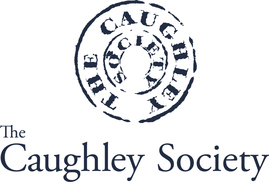GUIDANCE FOR AUTHORS
These guidelines have been drawn up to enable articles for the Caughley Society Newsletter to be processed in the most efficient way and allow them to appear in the Newsletter as the author intended and to the best possible quality. They are guidelines not rules, but if in doubt about anything please contact the editor.
Whilst these guidelines assume that authors have access to computers and the internet, articles and associated photographs in hardcopy are also welcome. These should be sent to the editor by post, who will then do the necessary.
General
Articles should be in Word with any images and captions put into the appropriate places. Images in this document should be cropped or modified so that the editor understands how the author intends them to appear. If necessary, please include instructions in red in the text to help the editor.
Please try not to use too much Word formatting as this has to be undone before sending copy to the designer. So for instance, it would be helpful if the article is written as one continuous A4 document (i.e. without page breaks) with normal margins and left justification.
In particular, please don't cut and paste from the internet. This can import hidden formatting which can play havoc with the design and printing.
Length
Articles of any length are welcome. Very long ones may be split to allow them to be published in sequential newsletters. We are always looking for ‘filler’ articles e.g. to fill the space when a previous article ends part way down a page, or when a single page is needed to allow correct pagination. So single page, half page or even quarter page articles are welcome, as are photographs that could be used for this purpose.
Layout
If you look at recent Newsletters, you will see that there is a house style of articles starting with a half-page, landscape format image, with the lower half of the page being filled with the title and opening text. If your article lends itself to this format, it would be helpful if you could arrange it like this please.
Images
The printing process requires images to be at 300dpi, i.e. high resolution. The designer is able to manipulate lower resolution images to persuade the printing process that they are 300dpi (even though they are not) but they will come out looking fuzzy and/or pixelated. The lower the resolution, the worse they will look. Please do not assume that if an image looks OK on your screen it will be OK in print - they are two different media that produce different end results! So, to do justice to your images, please supply them in the highest resolution you can get.
Be careful about images on the internet as they are often low quality. If possible please go back to the owner of the image and ask if they could let you have a copy of the original high resolution image. Auction houses are usually very co-operative about this, particularly as we will acknowledge their help, which is good advertising for them!
Images will need to be supplied to the editor as a separate file in addition to in the Word document already mentioned. They should be in original form (i.e. uncropped and not processed by image-editing software). The designer will then do whatever is necessary to make them appear as the author intended.
Tips on photography
- In general, a proper camera is better for this purpose than a phone.
- Make sure the image of the object is in sharp focus. Automatic cameras, especially if close to an object, will focus on one small area and the rest of the object will be out-of-focus.
- If the camera is too close, it can also cause a distorted image.
- If possible, use a tripod to avoid camera wobble.
- Use a plain background not of a bright colour. Grey or dark blue are usually good for porcelain. Domestic backgrounds are not good - and you never know what you might unwittingly include!
- Unless you have special photographic lights or a light box, daylight is better than electric lights.
- Avoid flash as it can cause unwanted reflections.
Copyright
Please ensure that you have permission to reproduce anything that is subject to copyright, and acknowledge it in your article accordingly. Acknowledgement will usually take the form of ‘courtesy Bonhams’, ‘© Trustees of the British Museum’, or ‘photo Fred Bloggs’.
Copyright of the articles published in the Newsletter remains with the author. Copyright for the layout lies with the designer, currently Ampersandesign, Oxford.
Submission
Articles for publication can be sent to the editor by email, other digital vehicle e.g. memory stick (which will be returned to the author) or electronic file transfer such as WeTransfer (see below).
As mentioned above, in addition to sending the Word document, original images should be sent separately as image files e.g. jpegs (.jpg).
As email systems tend to have a limit on size, they are not good for sending large attachments. A better way of sending them is via WeTransfer, which is free and very easy to use (see www.wetransfer.com and go to ‘Free’).
Editing
The Newsletter is regarded by many as an authoritative source of information. To maintain this, all articles will be peer reviewed by a member of the Society. If there are any queries at this stage they will be referred back to the author.
The editor will then check articles for spelling, punctuation, grammar and layout. Any minor changes necessary will be made, but where a major change is thought necessary the editor will consult with the author.
Publication
We try to work with sufficient material in hand for at least two Newsletters, and to make the content varied in both subject matter and length. This means that your article may not appear straight away.

Registered charity no 1137851
|

